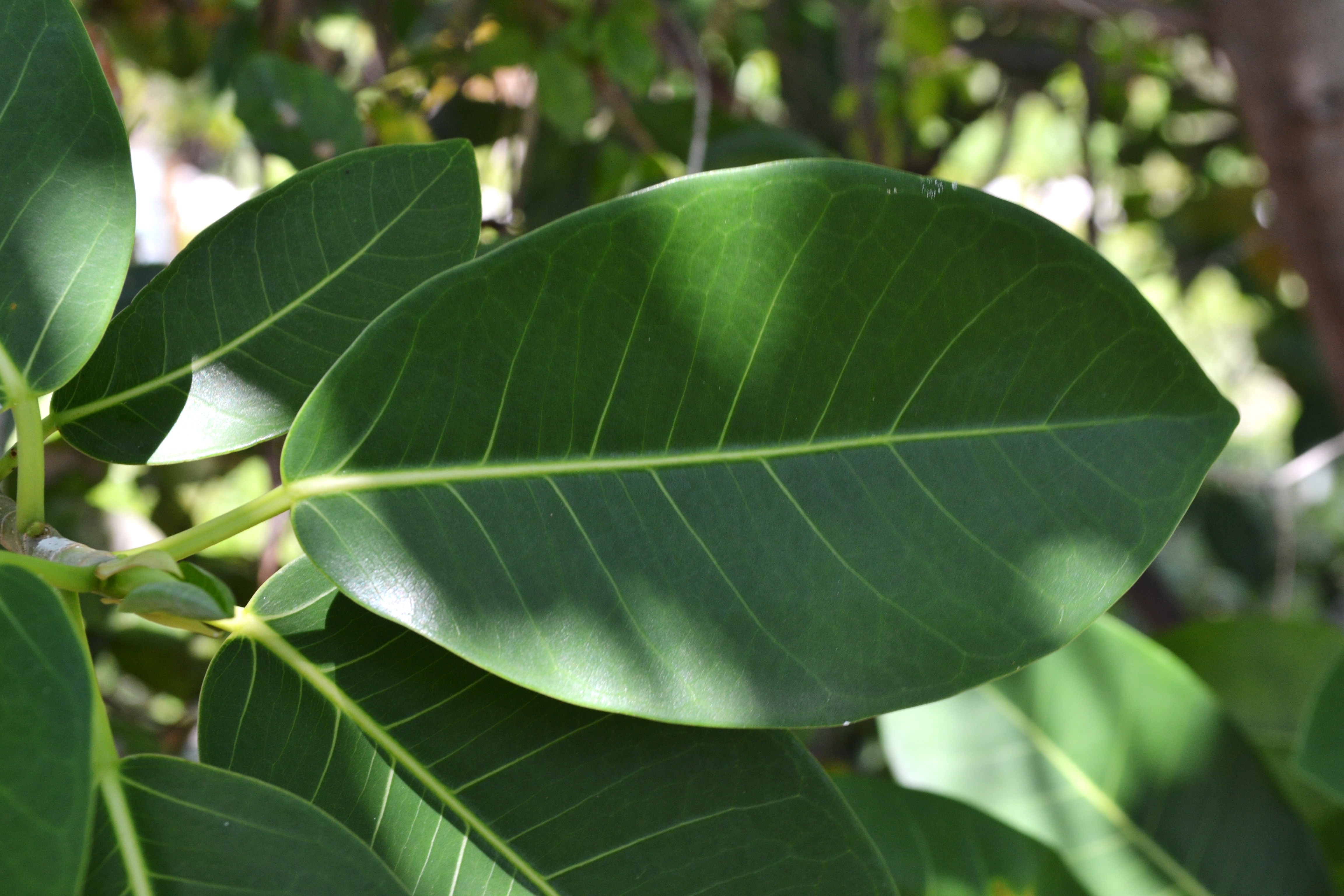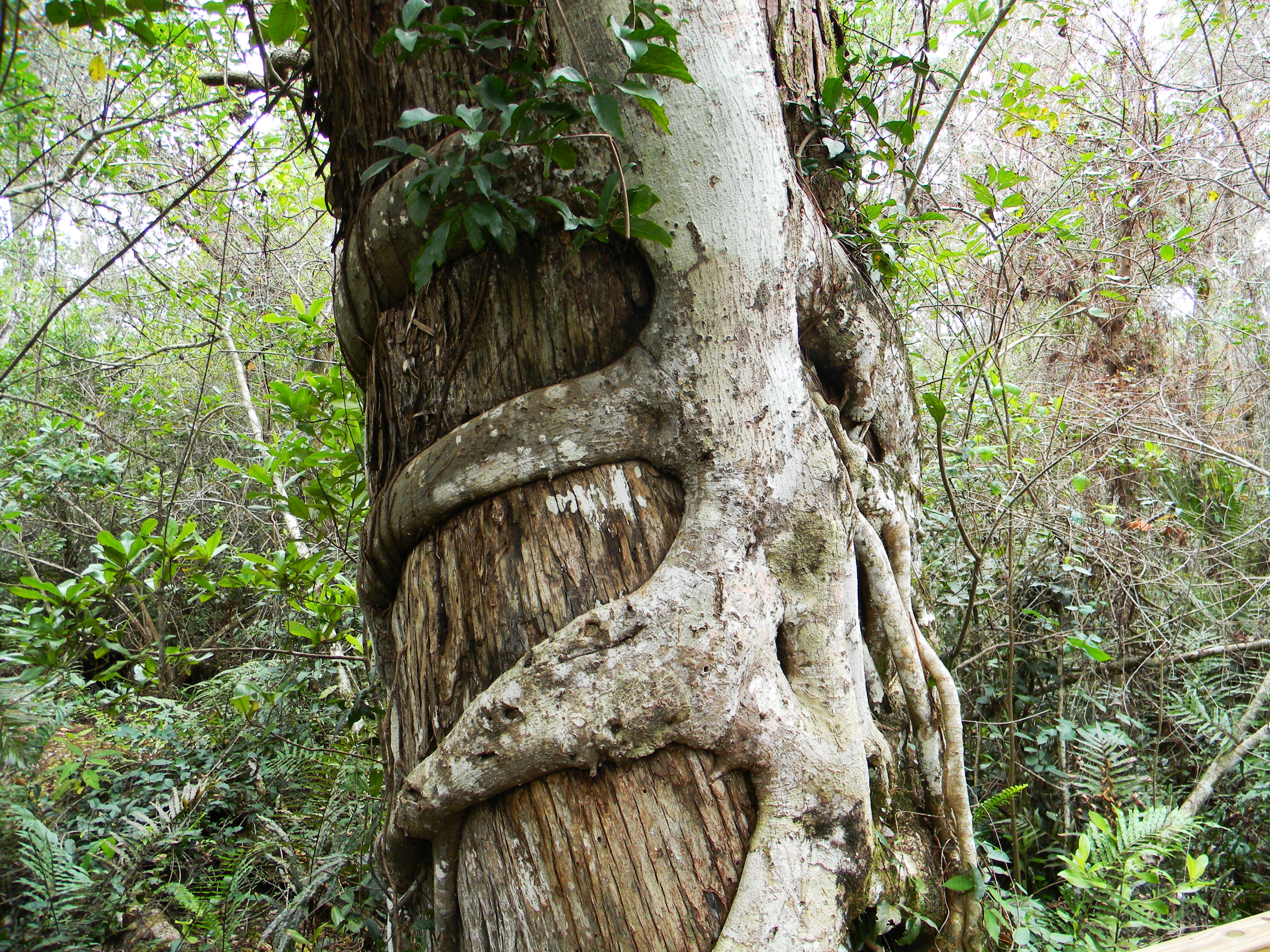Strangler Fig
Ficus aurea
Plant Family: Moraceae
Leaves: Alternate, simple, broadly elliptic, shiny, leathery, to 15 cm, petioles and midribs yellow or cream-colored. The twigs end in a pointed green stipule; the sap of broken leaves is white.
Bark: Gray, aerial roots that reach the ground become woody trunks and prop roots, though not to as great an extent as Banyan Tree (Ficus benghalensis).
Flowers: Minute, found within the fruit.
Fruits: Yellow-green, turning to dark red, in the leaf axils, without a stalk, to 2.5 cm, inside will be found the many miniscule flowers which are pollinated by a tiny wasp in a mutualistic relationship with the tree; seen all year, peaking in spring and summer.
Habitat: Hammocks and swamps.
Growth Form: Large tree.
Similar Species: Shortleaf Fig (Ficus citrifolia) has stalked fruits and longer leaf petioles.
Comments: Strangler Fig starts as an epiphyte that ultimately strangles and kills the host tree; the fruits are an important food for birds and small mammals.


